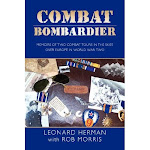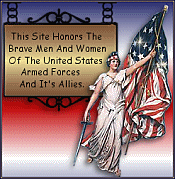
Brig. Gen. Charles E. "Chuck" Yeager was born in Myra, W.Va., on Feb. 13, 1923. He enlisted as a private in the Army Air Corps in September 1941 and, after serving briefly as an aircraft mechanic, entered enlisted pilot training in September 1942. He graduated as an enlisted flight officer from Luke Field, Ariz., in March 1943 and was assigned to the 363rd Fighter Squadron (357th Fighter Group) where he flew P-39s.

In November 1943, his unit was sent to England where he entered combat flying a P-51 Mustang . He downed a German aircraft before being shot down over occupied France during his eighth mission on March 5,1944. He evaded capture and managed to convince Gen. Dwight Eisenhower to permit him to return to combat with his squadron. He flew 56 more combat missions during which he shot down 11 more German aircraft (including five Me 109s during a single mission Oct. 12, 1944). He returned to the United States in February 1945 and was assigned to Perrin Field, Texas, as a basic flying instructor. Then, in July 1945, he was assigned as a maintenance officer to the Flight Test Division at Wright Field, Ohio, an assignment which was destined to lead to a major turning point in his career.

His remarkably superb flying skills quickly caught the attention of Col. Albert Boyd, chief of the division, and Col. Fred Ascani, his deputy. As Ascani recalled, Yeager flew an airplane "as though he was an integral part of it; his 'feel' for a new airplane was instinctive, intuitive and as natural as if he had already flown it for a hundred or more hours."In 1946, he graduated from the Flight Performance School (initial designation of the U.S. Air Force Test Pilot School) at Wright Field and, in 1947, Boyd selected him as project pilot for one of the most important series of flights in history. In late summer 1947, he was sent to Muroc Army Air Field (now Edwards Air Force Base) to fly the rocket-powered Bell X-1. After launch from a B-29, Oct. 14, 1947, he accelerated to a speed of Mach 1.06 at 42,000 feet and shattered the myth of the once-dreaded "sound barrier" forever. Spectacular though it was, Yeager's first supersonic flight represented just the beginning of a seven-year career at Edwards (1947-54) during which he would establish himself as one of the truly legendary figures among the world's fraternity of test pilots.


The late 1940s and '50s were an era when the limits of time and space were being dramatically expanded. A whole series of "X-" or experimental aircraft were designed to explore bold new concepts. Because of his consummate piloting skill, his coolness under pressure and ability to detect a problem, quickly analyze it and take appropriate action, Yeager was selected to probe some of the most challenging unknowns of flight in aircraft such as the X-1A, X-3, X-4, X-5 and XF-92A.He continued to explore the enigmas of high-speed flight, for example, as he piloted the rocket-powered X-1A to a record 1,650 mph (Mach 2.44) on Dec. 12, 1953. During this flight, he became the first pilot to encounter inertia coupling. The aircraft literally tumbled about all three axes as it plummeted for more than 40,000 feet before he was able to recover it to level flight. Even his legendary rival, Scott Crossfield, has since conceded that it was "probably fortunate" that Yeager was the pilot on that flight "so we had the airplane to fly another day."By latter-day standards, it is remarkable that, while engaged in a wide range of such highly experimental flight research programs, he was also involved in the evaluation of virtually all of the aircraft that were then being considered for the Air Force's operational inventory. Indeed, he averaged more than 100 flying hours per month from 1947-1954 and, at one point, actually flew 27 different types and models of aircraft within the span of a single month.
In October 1954, he was assigned to command the 417th Fighter Squadron, first in Germany and then in France. Returning to the United States in September 1957, he served as commander of the 1st Fighter Squadron at George Air Force Base, Calif.After graduating from the Air War College in June of 1961, he returned to Edwards where, in July 1962, he was selected to serve as commandant of the U.S. Air Force Aerospace Research Pilot School (designation of the U.S. Air Force Test Pilot School from 1961 to 1972) where he was responsible for the training of U.S. military astronaut candidates.In July 1966, he assumed command of the 405th Fighter Wing at Clark Air Base in the Philippines. During this tour,
he flew 127 combat missions over Vietnam.

After a 34-year military career, he retired on March 1, 1975. At the time of his retirement, he had flown more than 10,000 hours in more than 330 different types and models of aircraft. The magnitude of his achievements may be surmised from the fact that he has been the recipient of every major award in the field of flight from the Collier Trophy to the Harmon International Trophy and the Federation Aeronautique International Gold Medal as well as the highest honors that his own nation can accord, including the Presidential Medal of Freedom and a special peacetime Medal of Honor. Indeed, those achievements have earned him a place in that small pantheon of aviators which includes such names as Charles Lindburg and Jimmy Doolittle.

Recommended reading about Chuck Yeager:
Yeager: An Autobiography, by Chuck Yeager. I have a signed copy of this excellent book. Find a copy for yourself at http://www.amazon.com/Yeager-Autobiography-Chuck/dp/0553256742/ref=pd_bbs_sr_1/104-1823667-6149529?ie=UTF8&s=books&qid=1192310357&sr=8-1.
The Right Stuff, by Thomas Wolfe, about the early supersonic pioneers and astronauts. Find a copy at http://www.amazon.com/Right-Stuff-Tom-Wolfe/dp/1579124585/ref=pd_bbs_11/104-1823667-6149529?ie=UTF8&s=books&qid=1192310357&sr=8-11
Chuck Yeager and the Bell X-1: Breaking the Sound Barrier (Hardcover) by Dominic A. Pisano et al. Get a copy here at http://www.amazon.com/Chuck-Yeager-Bell-X-1-Breaking/dp/0810955350/ref=pd_bbs_sr_2/104-1823667-6149529?ie=UTF8&s=books&qid=1192310357&sr=8-2













No comments:
Post a Comment